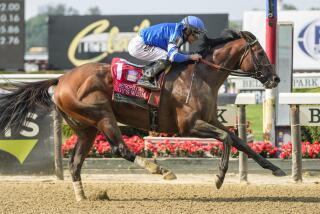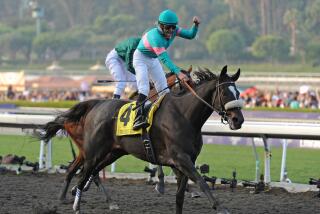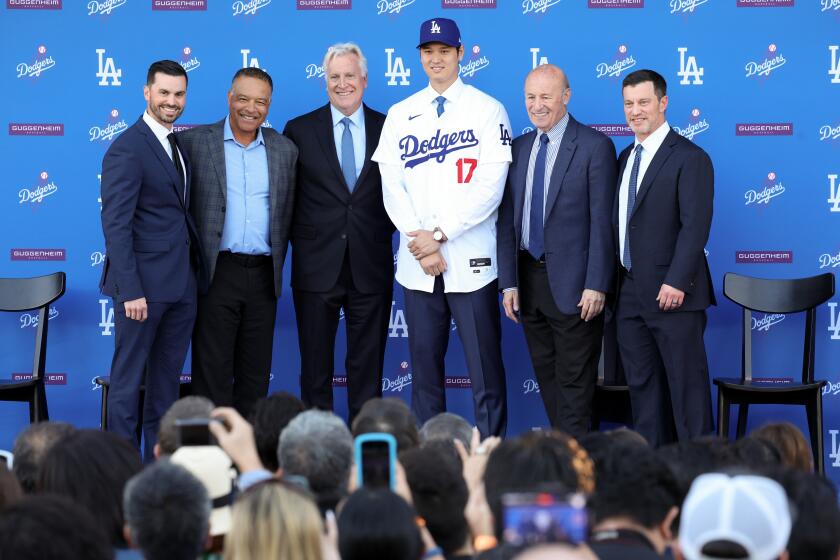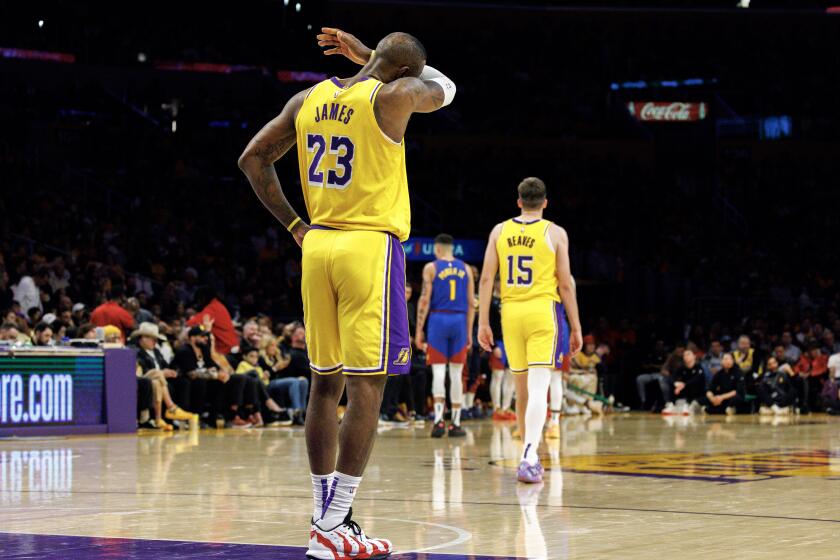Melatonin battles disease, comes back stronger to top of older horses division
David Hofmans watched intently as his talented 3-year-old colt, Home Run Kitten, was a mild upset winner in a 6½-furlong turf race at Santa Anita in the first month of 2014. But his gaze dropped back to the third-place finisher, the beaten favorite, and he knew he wanted that horse.
Through Bob Feld, a bloodstock agent, he inquired about buying Melatonin, but the horse wasn’t for sale. Less than a month later, when Melatonin broke his maiden on the dirt, he was on the market and Hofmans was first in line. Hofmans, discreetly, says he doesn’t remember how much he paid in the private transaction on behalf of Tarabilla Farms.
Three weeks into Melatonin’s stay in Hofmans’ barn, the veteran trainer noticed something different about the horse. He was a little wobbly, uncoordinated, something just not right. A blood test revealed equine protozoal myeloencephalitis (EPM), a serious neurological disease.
It would be a year and a half before Melatonin would return to racing and four races before he would stretch out and find great success at longer distances, including, at 16-1, winning the Santa Anita Handicap.
Saturday at Santa Anita he looks for his second Grade 1 win in the $500,000 Gold Cup, a race that has seen the likes of Citation, Swaps, Affirmed and Cigar win the 1¼-mile race. Melatonin was listed as the second favorite, at 7-2, behind Hoppertunity in the field of eight. Hoppertunity’s last race was a third in the Dubai World Cup, losing to California Chrome.
After the lengthy absence, the 5-year-old’s ascension to the upper echelon of the older horses division has been quick. Saturday’s race will be his eighth in 10 months. Not bad for a horse that was at risk to never run again.
EPM is rarely fatal but occasionally career-threatening. The origin of the disease is possum scat, which is then carried by birds, which are immune, and dropped in a horse’s feed supply.
“We see about two or three cases a year in California racing,” said Rick Arthur, equine director at both the UC Davis School of Veterinary Medicine and California Horse Racing Board.
“If this goes untreated it can paralyze a horse,” Hofmans said. “I kept him out a lot longer than normal. In the past I’ve made the mistake and kept them in training. Now I think it’s better to completely stop everything.”
The horse underwent two 28-day courses of drug treatment designed to kill the protozoa and minimize any damage to the central nervous system.
“After the second course, he started to change,” Hofmans said. “He was no longer uncoordinated. The sun and the grass helped him. When he came back he was a different horse.”
The sun and grass were provided by Peacefield Farm in Temecula. Melatonin was put in the care of Annie Lambert, manager at the rehabilitation facility. She describes herself as a kind of equine babysitter, but the quality of her clientele — including horses such as Beholder and Texas Red — indicates she does much more.
“The thing is that Dave Hofmans is such a good horseman that he [Melatonin] was lined out before we got him,” Lambert said. “He sent him down to us for some R & R and to make sure he would come back.”
Melatonin stayed on the farm for six months, four just resting and two getting his legs back in shape through a Eurosizer for exercise and conditioning and a whole-body vibration machine.
“We gelded him while we had him out,” Hofmans said. “We thought it would help him, especially because he wasn’t bred well enough to stand stud. He was also a little nervous.”
Lambert remembers Melatonin as a perfect gentleman.
“The main thing about him is he is such a professional,” Lambert said. “Nothing bothered him. He was so easy to get along with, of course he was a gelding.”
Melatonin returned to the track in August 2015, winning an allowance optional claiming race at Del Mar. He followed that with a fifth and a second in some minor stakes races and a third in another allowance optional claimer. All those races were short.
After a three-month rest he returned to Santa Anita and won impressively at 1 1/16ths of a mile.
“It was as easy as you can ever see a horse win,” Hofmans said. “That’s when I thought we had something. And, it seemed to [jockey] Joe [Talamo], that 1¼ [mile] was better for him than 1 1/16th.”
After Melatonin won the Santa Anita Handicap by a widening 4¼ lengths, the story was that Talamo was the one who talked Hofmans into entering him in a race that was such a big class jump.
“They said that, but I can’t take credit for it,” Talamo said. “Dave had the vision for that. So did [assistant trainer] Brent [Fabbri]. They put in so much work in the morning they knew how well he was working. He was in peak form.”
Melatonin was entered a month later in the Oaklawn Handicap in Arkansas and, although he finished second, might have been even more impressive finishing a strong second to Effinex on a track that was heavily favoring closers. Melatonin was caught on a dead rail most of the race and still lost by only a length to the horse that finished second to American Pharoah in last year’s Breeders’ Cup Classic.
“I was glad to see him run that big,” Talamo said. “It validated his effort in the Big ‘Cap. I think he ran an unbelievable race.”
Saturday will be a busy day for Hofmans, who also has Home Run Kitten running in the Grade 1 $300,000 Triple Bend Stakes over 7 furlongs.
The winner of the Gold Cup will get an automatic entry into the Breeders’ Cup Classic to be run on Nov. 5 at Santa Anita.
So, with a win on Saturday is Hofmans looking to race in the rarefied air of California Chrome and Beholder?
“Nope, I’m going to duck them as much as I can,” Hofmans said with laugh. “If we win we can run where we want and face the big guys in the Classic. One race at a time.”
More to Read
Get our high school sports newsletter
Prep Rally is devoted to the SoCal high school sports experience, bringing you scores, stories and a behind-the-scenes look at what makes prep sports so popular.
You may occasionally receive promotional content from the Los Angeles Times.







